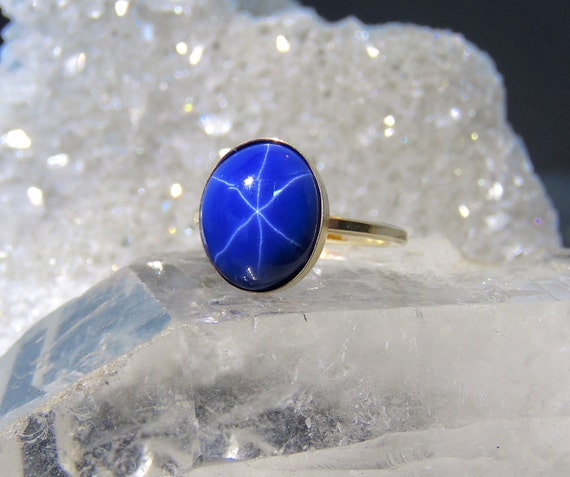How is Black Sapphire Mined and Processed?
Black Sapphire, often referred to as "Natural Star Sapphire," is a captivating gemstone that has captivated the hearts of gem enthusiasts and collectors worldwide. This unique gemstone, known for its deep, velvety black color and mesmerizing star-like phenomenon, is found in various parts of the world. In this article, we will delve into the intriguing journey of how Black Sapphire is mined and processed, from its rough, unrefined state to its exquisite, polished form.
What is Black Sapphire?
Black Sapphire is a variety of the mineral corundum, which is the same mineral that produces other well-known gemstones, such as ruby and sapphire in various colors. The deep black color of Black Sapphire is primarily due to the presence of iron and titanium impurities. What sets Black Sapphire apart is its ability to exhibit a unique optical phenomenon known as asterism, creating a star-like pattern on the surface when viewed under direct light.

The Mining Process
Mining Black Sapphire is a meticulous and often challenging process that involves several stages. The gemstone is primarily found in igneous and metamorphic rocks, and its discovery requires a blend of geological expertise and hard work.
Prospecting and Exploration
The journey to find Black Sapphire begins with geological prospecting and exploration. Geologists and experts analyze rock formations, geological maps, and mineral compositions in potential regions. These experts often work with local communities and stakeholders to determine the best locations for mining.
Surface Mining
In some regions, Black Sapphire can be found relatively close to the surface. In such cases, open-pit or surface mining methods are employed. Miners extract the gem-bearing rock and soil layers by removing overburden (unwanted materials) until they reach the gem-bearing layers.
Underground Mining
In locations where Black Sapphire deposits are situated deep underground, miners employ underground mining techniques. This method involves the construction of tunnels and shafts to access the gem-bearing layers safely. Miners may use various tools, including explosives and excavation equipment, to extract the gem-rich material.
Sorting and Extraction
Once the Black Sapphire-bearing rock is extracted, it goes through a sorting process to separate the gemstones from the surrounding material. Miners typically use techniques like washing, sieving, and hand sorting to identify and extract Black Sapphire.
The Processing Journey
After the Black Sapphire is extracted from the earth, it undergoes a series of processes to transform it from its raw, unrefined state into a polished gemstone of exceptional beauty.

Cleaning and Washing
The rough Black Sapphire crystals are cleaned to remove any residual dirt and debris. This is often done using a combination of water, detergents, and ultrasonic equipment. Cleaning is essential to prepare the gem for the subsequent stages of processing.
Preforming
Preforming involves shaping the rough Black Sapphire into a more manageable form. Experienced lapidaries use specialized cutting equipment to create a basic outline of the final gem. The preforming step helps reduce material loss and optimize the yield.
Grinding and Shaping
After preforming, the Black Sapphire is further shaped and refined through grinding and shaping processes. Lapidarists use grinding wheels with varying grits to create the desired facets and angles on the gemstone. This step is crucial to achieving the Black Sapphire's signature cabochon shape.
Polishing
The polishing stage brings out the brilliant luster and shine of the Black Sapphire. Lapidaries use polishing wheels and compounds to give the gemstone its final, mirror-like finish. This process is essential for maximizing the gem's reflective and refractive properties.
Final Inspection
Once the Black Sapphire is polished, it undergoes a thorough inspection by gem experts to ensure it meets the quality standards and exhibits the sought-after asterism effect. Any imperfections are addressed, and the gem is carefully examined for any irregularities.
Conclusion:
Black Sapphire, or Natural Star Sapphire, is a gemstone of extraordinary beauty and mystique. Its journey from the earth's depths to becoming a polished gem involves prospecting, mining, and a meticulous processing journey. The unique qualities of Black Sapphire, including its deep black hue and star-like optical phenomenon, make it a highly sought-after gem in the world of gemology and jewelry. Understanding the intricate processes involved in mining and processing Black Sapphire reveals the dedication and expertise required to bring this remarkable gem to its full splendor, ready to adorn jewelry pieces and captivate the hearts of those who admire its elegance.
Comments
Post a Comment